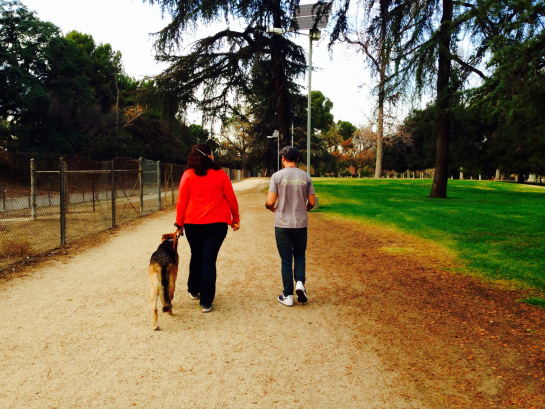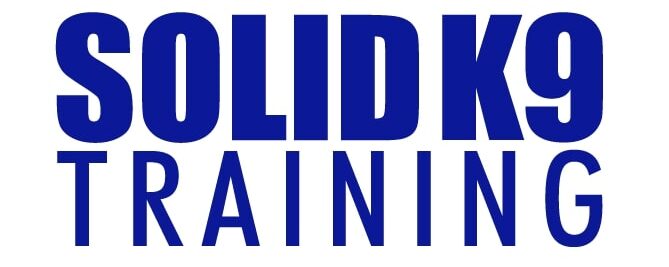The Story Of Abuse
As a dog trainer who travels the country training dogs and working with 20-30 families a week in their homes it is so important for folks to understand how a dog thinks. And when there is no authority figure present, the kind of chaos and bad behavior that can happen. Remember the bad behavior of your dog is not the problem it is just the outcome of a breakdown of leadership in your home.
My friend, co-host of the Train The Trainers Seminar Series, and LA dog training colleague Sean O’Shea from The Good Dog Training and Rehabilitation puts out such a great blog that I feature it here on my blog. Since the message is so powerful and important it needs to be shared by all. Enjoy the read and feel free to also join his Facebook Fan Page.
The Story Of Abuse
By Sean O’Shea

We’ve all heard about or have had dogs that have had a negative past. Perhaps they were neglected, perhaps they were chained to a tree, perhaps they were starved, perhaps they were yelled at or hit for perceived
infractions. As dog lovers this can be a hard one to wrap our heads around, and an even harder one to let go of.
I’ve seen many, many owners who have become so invested in their dog’s story of abuse that it’s taken on a life of its own. It becomes a very big part of the dog (and the owner). And it often colors and informs all of the ways the owner interacts with the dog.
Because of the abuse story, the owner wants to avoid the dog ever experiencing anything unpleasant. They want to protect the dog from the world. They want to ensure the pain is done.
This often looks like: babying the dog; coddling the dog; being overly permissive with the dog; refusing to share rules, structure, or discipline with the dog; spoiling the dog; being overly affectionate with the dog; being overly emotional with the dog etc.
And while I get and appreciate the motivation behind these choices, the truth is that more dogs have been harmed long-term by all of the above actions than they have by abuse.
Abuse happens and once the dog is removed from the situation, the abuse is over. Yes there can be issues to work through – perhaps challenging ones – but it’s the mindset of owners who can’t let go of the abuse story (and thus are unable or unwilling to share what the dog truly needs) who lock the dog into a lifetime of abuse by way of neglect. Neglect of the dog’s true needs.
Yes, even dogs who have had terribly negative experiences still need structure, rules, guidance, and accountability. Well actually, here’s the real truth, they usually need these things even more than other dogs. Their world’s have been so devoid of what they need that they are often a mess. And the best gift you can give a struggling, confused, overwhelmed, and frightened dog is not more of the same – the best gift you can give them is the deliverance from those painful states.
The game changer emotionally for owners is to start to look at dogs with these stories and realize that the real pain, the ongoing, long-term pain of abuse, is caused and perpetuated much more by us not being able to move forward than it is the actual abuse itself. And that by moving forward, and by treating the dog like a normal dog, with normal needs – of structure, leadership, rules, and accountability – you actually take the first step towards removing the pain, the first step towards a love (and motivation) that can heal, rather than harm.
Beliefs and stories are powerful. They affect our thoughts and choices and actions. So be sure the story you’re telling yourself and others about your dog is one that serves him or her. A story that helps them recover and thrive, rather than remain stuck in the muck of the past.
P.S. On a personal note, I’ve seen far more dogs harmed by a lack of training and healthy lifestyle with their owner than I have all the abuse cases combined.
P.S.S. And just to be clear, the only reason I didn’t include love and affection in my prescribed suggestions for helping troubled dogs, is because that’s the easy part. The part that comes natural. And it’s the the one aspect I never seem to have to coach folks on doing more of. Always less and more selectively. 🙂
Sean’s website www.thegooddog.net
Solid K9 Training Training Center- 25 Acorn Street, Providence, RI 02903
(401) 274 1078 Providence Training Center Info
*********FOLLOW ME**********
Subscribe To My YouTube Channel
Facebook
Twitter
Instagram
Pinterest

We recently starting fostering a four-year-old dog that is terrified of pretty much everything. She is hanging out in her crate most of the time, even with the door wide open. She has not barked once since she arrived three weeks ago, flinches if we so much as sniffle, and her tail is always down. She has ventured out twice to come and sit with me, and enjoys the back yard for short stints. We have another dog, but she ignores Sassy. There is no aggression between the two, but no interaction either. We have also been in the process of house training her.
My friend told me about your training methods, and I’m wondering if you might have a book I can buy. At the minimum, we want to rehabilitate her so she will be adoptable. At the maximum, we would consider adopting her if we can get her past her fear, and have her be a functioning part of our family. Everything I know about training a dog doesn’t apply to her. She won’t take treats out of my hand, so training is more scary for her than it is reward based. Please help!
Wow, reading this with tears in eyes. Between you and Jeff at solid k-9 we have learned so much. Found it awesome when I found out you to were friends because you 2 are my our favorites on YouTube to learn from. We just got an American bulldog from a rescue and has grown in leaps n bounds from the advice of you both. I had the mind set of this poor dog hat has he all gone through. Thanks for setting me straight on keeping up the structure with love. Steve
so glad you enjoyed it, Sean really spells it out incredibly well, excited for your progress. Jeff